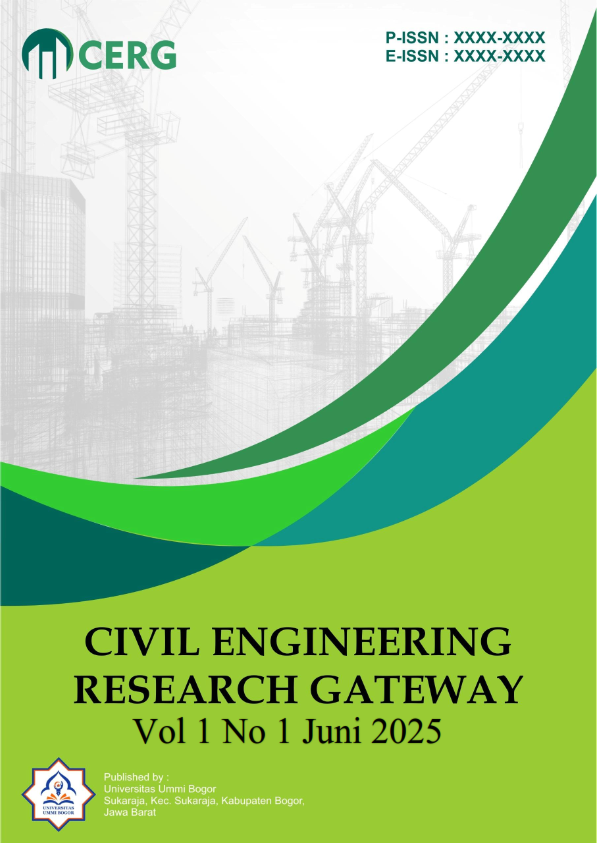Innovative Civil Engineering Approaches for Sustainable and Resilient Urban Infrastructure
Keywords:
Civil Engineering, Innovation, Resilience, Sustainability, Urban InfrastructureAbstract
Urban infrastructure faces unprecedented challenges due to rapid population growth, environmental degradation, and the increasing frequency of climate-related disasters. Traditional civil engineering practices often struggle to keep pace with these complex demands, highlighting the urgent need for innovative approaches that emphasize both sustainability and resilience. This study aims to explore forward-looking civil engineering strategies that integrate technological advancements, environmentally conscious designs, and adaptive planning models to ensure long-term functionality and societal well-being. Employing a mixed-method research design, the study combines literature analysis with conceptual modeling to evaluate key frameworks such as Building Information Modeling, smart city integration, and green construction practices. The analysis reveals that digital transformation, particularly through automation and data-driven decision-making, significantly enhances the efficiency and safety of infrastructure development. Furthermore, the adoption of green building technologies and resilient planning principles fosters ecological balance, reduces carbon emissions, and strengthens adaptive capacity against disasters. Findings indicate that collaboration among stakeholders, coupled with innovative leadership in project design and execution, is critical to overcoming existing barriers such as high implementation costs and resistance to change. This research underscores the transformative potential of civil engineering when guided by principles of sustainability and resilience, suggesting that future urban infrastructure must not only support economic development but also safeguard environmental and social systems. The implications of these findings extend beyond theory, offering practical guidance for policymakers, urban planners, and engineers to design infrastructures that are both future-ready and capable of withstanding evolving global challenges.
References
Ahn, Y. H., Pearce, A. R., & Ku, K. (2017). Sustainable construction: Drivers, barriers, and opportunities. Journal of Management in Engineering, 33(6), 04017035. https://doi.org/10.1061/(ASCE)ME.1943-5479.0000556
Creswell, J. W., & Plano Clark, V. L. (2017). Designing and conducting mixed methods research (3rd ed.). SAGE Publications.
Darko, A., & Chan, A. P. C. (2018). Critical analysis of green building research trend in construction journals. Habitat International, 75, 78–93. https://doi.org/10.1016/j.habitatint.2018.03.009
Etikan, I., Musa, S. A., & Alkassim, R. S. (2016). Comparison of convenience sampling and purposive sampling. American Journal of Theoretical and Applied Statistics, 5(1), 1–4. https://doi.org/10.11648/j.ajtas.20160501.11
Hair, J. F., Black, W. C., Babin, B. J., & Anderson, R. E. (2019). Multivariate data analysis (8th ed.). Cengage Learning.
Holling, C. S. (1973). Resilience and stability of ecological systems. Annual Review of Ecology and Systematics, 4(1), 1–23. https://doi.org/10.1146/annurev.es.04.110173.000245
Lee, D., Park, M., & Han, S. (2021). Digital transformation in the construction industry: Emerging trends and future directions. Journal of Civil Engineering and Management, 27(3), 189–203. https://doi.org/10.3846/jcem.2021.14041
Marzouk, M., & Othman, A. (2017). Planning utility infrastructure requirements for smart cities using BIM and GIS. Journal of Information Technology in Construction (ITcon), 22, 220–240.
Melchers, R. E., & Beck, A. T. (2018). Structural reliability analysis and prediction (3rd ed.). John Wiley & Sons.
Oti, A. H., & Tizani, W. (2015). BIM extension for the sustainability appraisal of conceptual steel design. Advanced Engineering Informatics, 29(1), 28–46. https://doi.org/10.1016/j.aei.2014.09.001
Paton, D., & Buergelt, P. T. (2019). Risk, transformation and adaptation: Ideas for reframing approaches to disaster risk reduction. International Journal of Environmental Research and Public Health, 16(14), 2594. https://doi.org/10.3390/ijerph16142594
Patton, M. Q. (2015). Qualitative research & evaluation methods (4th ed.). SAGE Publications.
Rockström, J., Gupta, J., Lenton, T. M., Qin, D., Lade, S. J., Abrams, J. F., Jacobson, L., Rocha, J. C., Zimm, C., Bai, X., Schlüter, M., & Gaffney, O. (2020). Identifying a safe and just corridor for people and the planet. Earth’s Future, 8(10), e2020EF001866. https://doi.org/10.1029/2020EF001866
Shen, L., Wu, Y., & Zhang, X. (2017). Key assessment indicators for the sustainability of infrastructure projects. Journal of Construction Engineering and Management, 143(5), 04016117. https://doi.org/10.1061/(ASCE)CO.1943-7862.0001262
Downloads
Published
Issue
Section
License
Copyright (c) 2025 Civil Engineering Research Gateway

This work is licensed under a Creative Commons Attribution-ShareAlike 4.0 International License.



